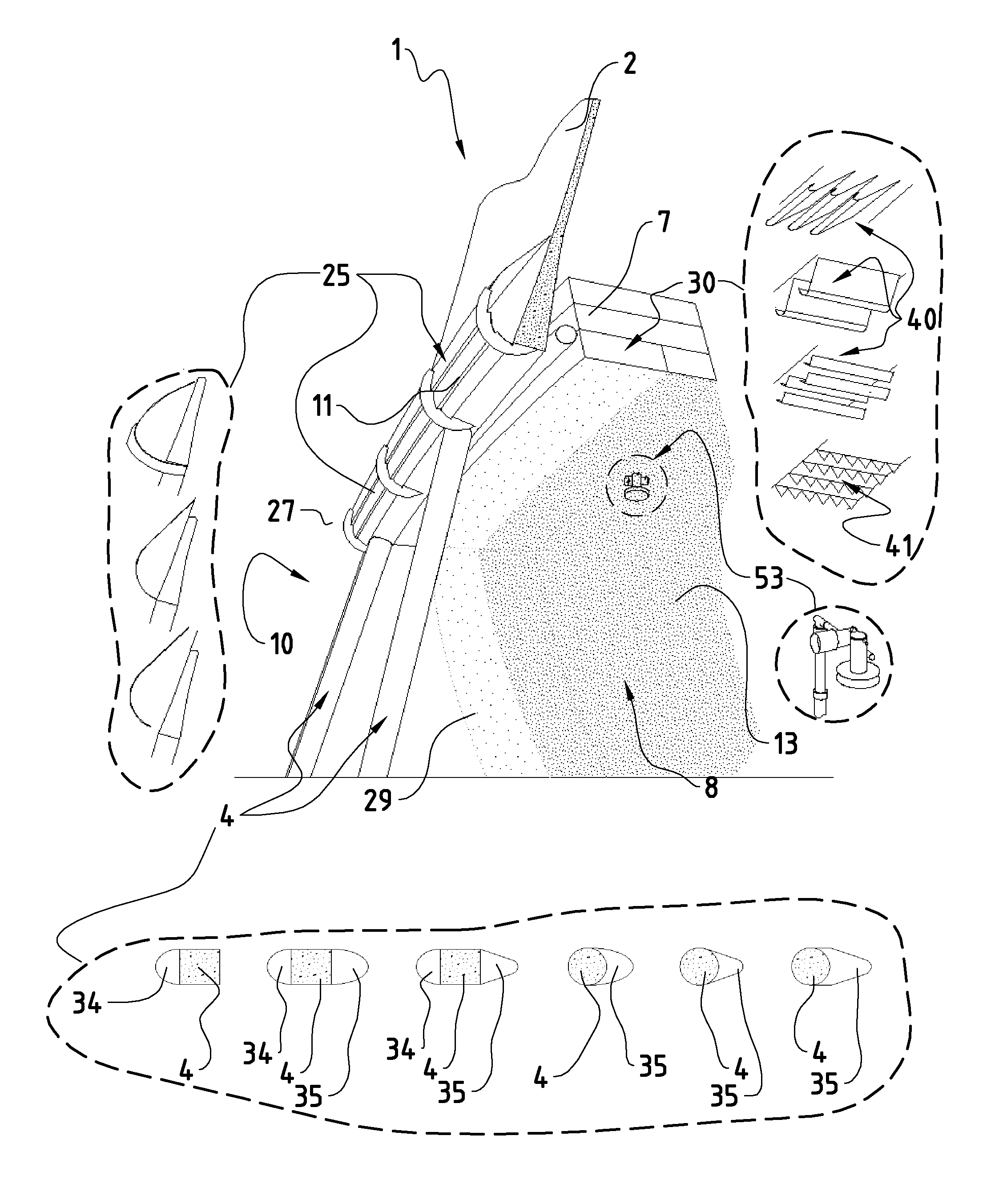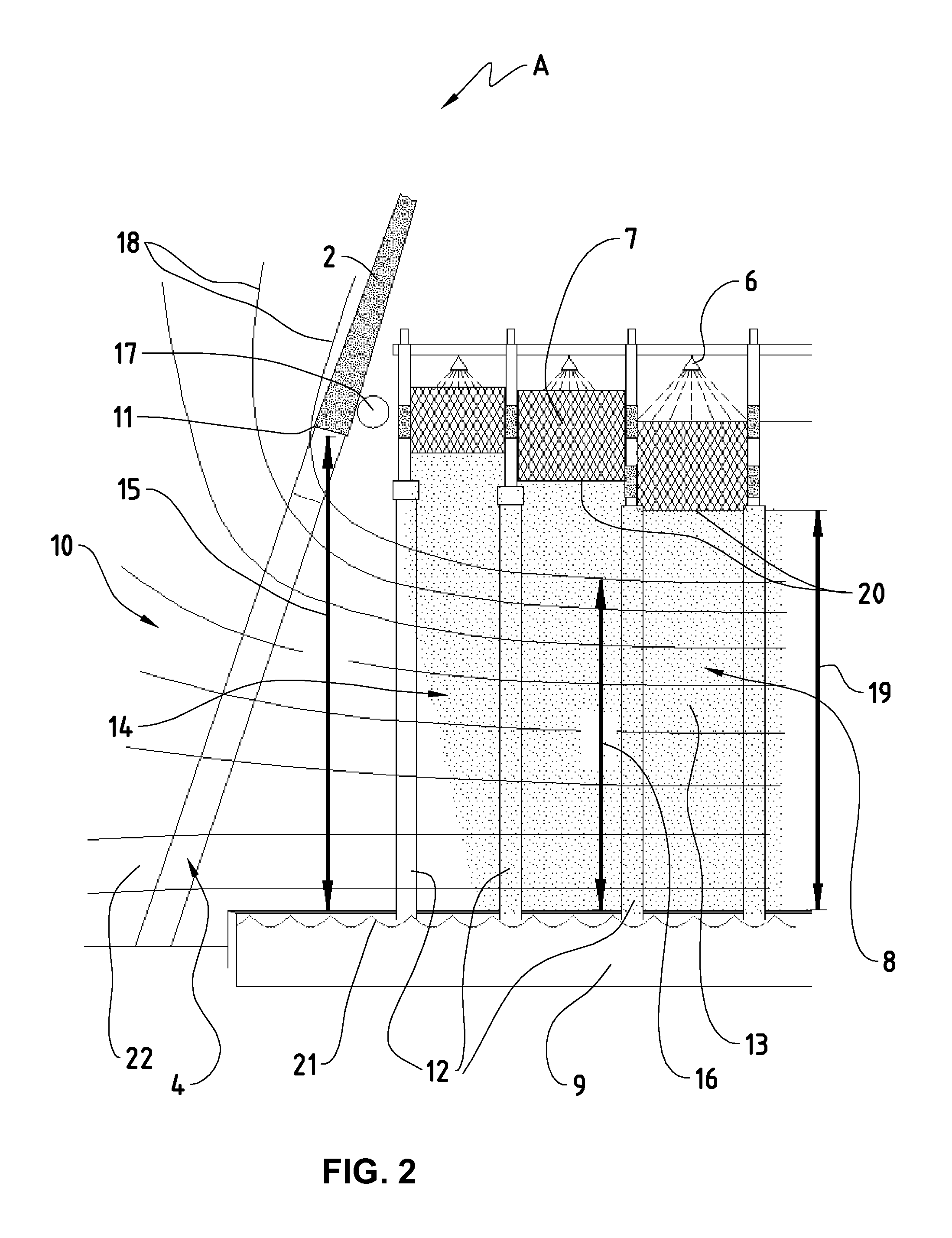Air introduction system and method for cooling towers
a technology of air introduction system and cooling tower, which is applied in the direction of trickle cooler, fuel gas production, liquid separation agent, etc., can solve the problems of large air quantity that flows upwards through the cooling tower in order to convey away the waste heat of the plant to be cooled, difficult to achieve the cooling efficiency achieved by direct cooling, and large air quantity
- Summary
- Abstract
- Description
- Claims
- Application Information
AI Technical Summary
Benefits of technology
Problems solved by technology
Method used
Image
Examples
Embodiment Construction
[0051]FIG. 1 shows as example a conventional wet cooling tower 1 with natural draft. Such a tower has a cooling tower shell 2 (also called shell or flue element), which is borne on the underlying support surface 3 by means of a set of supports 4. Air from the surrounding area of the tower is drawn in through the air inflow opening 10 (between the supports and between shell 2 and support surface 3). The air flows under through the air inflow opening 10 into the so-called rain zone 8 of the tower 1, where it is subsequently distributed. Coming out of the rain zone 8, the air rises up through the heat exchanger surfaces (the so-called fill 7), in counterflow to the downward flowing hot water from the condenser. The air then flows through the spray zone, in which the hot water is sprayed as evenly as possible on the fill 7 by thousands of firmly built-in spraying units 6. Droplet separators 5 finally free the rising air of small spray droplets, which arise through this spraying, before ...
PUM
| Property | Measurement | Unit |
|---|---|---|
| water vapor pressures | aaaaa | aaaaa |
| air current | aaaaa | aaaaa |
| height | aaaaa | aaaaa |
Abstract
Description
Claims
Application Information
 Login to View More
Login to View More - R&D
- Intellectual Property
- Life Sciences
- Materials
- Tech Scout
- Unparalleled Data Quality
- Higher Quality Content
- 60% Fewer Hallucinations
Browse by: Latest US Patents, China's latest patents, Technical Efficacy Thesaurus, Application Domain, Technology Topic, Popular Technical Reports.
© 2025 PatSnap. All rights reserved.Legal|Privacy policy|Modern Slavery Act Transparency Statement|Sitemap|About US| Contact US: help@patsnap.com



